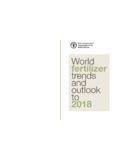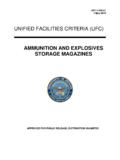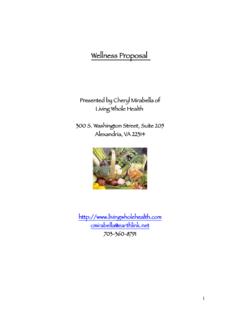Transcription of SOLOMON ISLANDS FORESTRY OUTLOOK STUDY
1 ASIA-PACIFIC FORESTRY SECTOR OUTLOOK STUDY II. WORKING PAPER SERIES. Working Paper No. APFSOS II/WP/2009/31. SOLOMON ISLANDS FORESTRY OUTLOOK . STUDY1. by Richard L. Pauku2. FOOD AND AGRICULTURE ORGANIZATION OF THE UNITED NATIONS. REGIONAL OFFICE FOR ASIA AND THE PACIFIC. Bangkok, 2009. 1. This report has been prepared for the SOLOMON ISLANDS Government. Although the author believes the information contained in this report has been prepared with due care and attention, he can accept no responsibility and no legal liability whatsoever for its contents. The views expressed in this document are those of the author and do not necessarily represent positions of FAO or the SOLOMON ISLANDS Government.
2 2. Maraghoto Holdings Company Limited, Box 1322, Honiara, SOLOMON ISLANDS . Tel: (677) 23190, Mobile: (677) 73246. Email: APFSOS II: SOLOMON ISLANDS Acknowledgements The author expresses his deepest gratitude to the many stakeholders including representatives of the SOLOMON ISLANDS Government, resource owners, NGOs, community-based groups, academia, and the private sector, who gave freely of their time to contribute their views and knowledge through the consultation process. For the stakeholders, the challenging task and hard work of building a sustainable future through effective management of forests and FORESTRY is enormous. Sincere good wishes are extended to them to make it real in the SOLOMON ISLANDS .
3 Ii APFSOS II: SOLOMON ISLANDS Executive summary Forests have been described as the most essential biomes on the planet because they play an important role in the earth's biophysical system, and support human well-being (Aplin et al. 1999; WCFSD 1999). Across the globe, forests have been recognized for meeting the needs of the people for timber, food, medicines, fibre, etc. (FAO 1989; Leakey and Newton 1994a;. WCFSD 1999). Traditionally, they have sustained the livelihoods of people, first through hunting and gathering and later through shifting cultivation. However, forests are often now cleared extensively to satisfy the needs and aspirations of rapidly expanding populations and their increasing materialism.
4 Forests are also the domain of hundreds of thousands of plants and animals species, which live in complex and dynamic ecosystems, bound intricately together through food chains and life cycles. In the SOLOMON ISLANDS , unsustainable logging has had serious impacts on forest land availability. Commercial logging of natural forests has, over the years, changed the vegetation cover of the main ISLANDS of the SOLOMON ISLANDS . It has been estimated that the forest cover has decreased from 80% in the 1990s, to 76% today indicating a significant loss in FORESTRY resources including biodiversity. These logged-over areas have lost significant natural and ecological value in terms of their functioning as habitats for biodiversity, sinks for the sequestration of atmospheric carbon, and watershed catchment areas.
5 Some endemic forest species that are unable to adapt to new environments face possible extinction. The majority of the forested land mass in the SOLOMON ISLANDS is under customary ownership. The prevailing traditional system of landownership provides a welfare safety-net for the vast majority of SOLOMON Islanders. Customary land tenure also supports the country's robust village-based subsistence gardening. At the same time, customary ownership is regarded a major constraint to large-scale development. Often it is problematic, costly and fraught with uncertainty due to the inevitable and often multiple disputes that arise between owners and developers, or between different landowner groups.
6 Equally problematic is when the land is set aside for other public purposes, such as management of watersheds, protection of sites of special interest, or conserving environmentally-sensitive areas. The Ministry of FORESTRY of the SOLOMON ISLANDS Government is responsible for the overall management of the forest resources of SOLOMON ISLANDS . The Forest Resources and Timber Utilisation Act, which guides the Ministry, provides for the conservation of forests and the improved management of forest resources, control of timber harvesting, encouragement and facilitation of sustainable FORESTRY activities, establishment of plantations, and domestic processing of timber. The extent to which the forest resources are managed in a sustainable manner is effectively limited.
7 For example, in 2004, it was reported that around 1 million m3 of logs were harvested, in contrast with the sustainable harvest level estimated at around only 200,000 m3. In 2007, round log exports increased by 28% to 1,446,003 m3 from 1,130,365 m3 in 2006. (CBSI 2007). Such rate of log exports should have been a signal to the government to seriously re-visit its forest policy and intervene constructively. Instead the government continues to grant logging licenses to companies and landowners to carry out logging on customary lands. Currently, there are 141 felling licenses and 150 milling licenses granted by the Ministry of FORESTRY , which are operative throughout the country.
8 In the light of such an appalling scenario, the SOLOMON ISLANDS Forest Management Project (SIFMP) has recently predicted that the natural forests will be exhausted by 2015. In terms of forest plantations, the government has planted both indigenous and exotic species since the 1950s at various locations in the country. The total commercial area of plantation iii APFSOS II: SOLOMON ISLANDS forests in 2005 was estimated to be 28,000 ha. This area covers large-scale-forest plantations established at Alu, Kolombangara, Viru, Gizo, Choiseul Bay, Moli, Allardyce and Santa Cruz. Forest species mostly planted by industrial plantations include Gmelina arborea, Campnosperma brevipetiolatum, Eucalyptus deglupta, Terminalia calamansanai, T.
9 Brassiai, Acacia spp. and Swetinia macrophylla. When replanting after harvesting, G. arborea, E. deglupta, Tectona grandis and S. macrophylla appears to be favourites over the other species. iv APFSOS II: SOLOMON ISLANDS Contents ACKNOWLEDGEMENTS iii EXECUTIVE SUMMARY iv 1. INTRODUCTION 1. Background 1. Scope and coverage 1. The methodology 1. Structure of the report 1. 2. CURRENT STATE OF FORESTS AND FORESTRY IN SOLOMON ISLANDS 3. The country 3. Trends in the forest resources 5. Forest ownership 15. State of forest management 16. Economic viability of forest management for wood production 20. Wood and wood products 21. The service functions of forests 23. Policy and institutional framework 26.
10 3. WHAT WILL INFLUENCE THE FUTURE STATE OF FORESTS AND. FORESTRY ? 28. An overview of the changing characteristics of the society highlighting key trends 28. The political and institutional environment 29. Local communities 30. Overall trends/tendencies in governance 30. Economic changes 31. Impact of globalisation 32. Technological changes within and outside the forest sector 32. Environmental issues and policies and their impacts on the forest sector 32. 4. PROBABLE SCENARIOS AND THEIR IMPLICATIONS 34. Rationale for scenario definition 35. Elements (parameters) used in defining scenarios. 35. The business-as-usual scenario 35. 5. WHAT WE MAY SEE IN 2020 38. Forest resources in the next two decades 38.
















